|
|
|
Greetings!
To start on a lighter note, check
out the two minute DC edition of Game of Thrones called District of Thrones
It's a nonverbal tour de force of
the Washington Post's view of our government. Since
our readers know that I was a witness at the 2013 Citizens'
Hearing at the National Press Club, you will be happy
to learn that event was the impetus for Senator McCain's office and
Congressman Cook to facilitate full medical disability for
another witness and US military veteran,John Burroughs, who was injured during exposure to prolonged UAP
(unidentified aerial phenomenon) radiation. This is a first for our
country and his book is worth
reading
Global
Warming Summit, the need for
accelerated development of clean fuel-free energy and propulsion is
paramount. That is where our institute stands out above the usual
renewable lobby. You are invited to experience the
cutting edge
scientists at COFE7 who
are helping to define new energy for public appreciation which is the
only hope for a discontinuous jump in technology. See Story #1 for
the great lineup of our speakers for the Seventh International
Conference on Future Energy (COFE7) and an announcement of my latest
journal publication.
Story
#2 gives us hope for the
spacefaring younger generation, thousands of whom want to go into
space and go to Mars. The new Dream Chaser spacecraft will usher in a
new era of shuttle service to near earth orbit with help from NASA.
Video included.
Story
#3 is an exciting breakthrough using
energy (future energy is here folks) to put out fires. A low rumbling
sonic frequency extinguishes flames in seconds, thanks to engineering
majors at George Mason University. Video included.
Story
#4 tells us that electric vehicles
(EVs) are here to stay and getting more affordable. Only ten years
ago, IRI featured the movie, "Who
Killed the Electric Car?" and star of the movie,
Chelsea Sexton, at COFE2 and
now the rebound is tremendous. Since it is getting to be cheaper to
charge a 300-mile EV (about $10) than fill an equivalent car with
gas, thinktanks are predicting a "potential paradigm shift in
vehicle technology" with Tesla driving
electric car innovation.
Story
#5 leads us into the more esoteric
energy realm with the hunt for dark matter and its cousin, dark
energy, said to make up the majority of matter and energy in the
universe. Of course, more physicists are recognizing the link to
vacuum energy and its surface interface, zero point energy, as the
most likely candidate for the dark mystery of a "one force
controlling everything." Harvard
University agrees that zero point vacuum energy is
the most likely candidate for dark matter and dark energy. Come to
COFE7 to learn more!
Sincerely,
Thomas
Valone, PhD, PE.
Editor
|
|
|
OUR LATEST CONFERENCE
COFE7
JULY 30-AUG 1, 2015
ALBUQUERQUE , NM
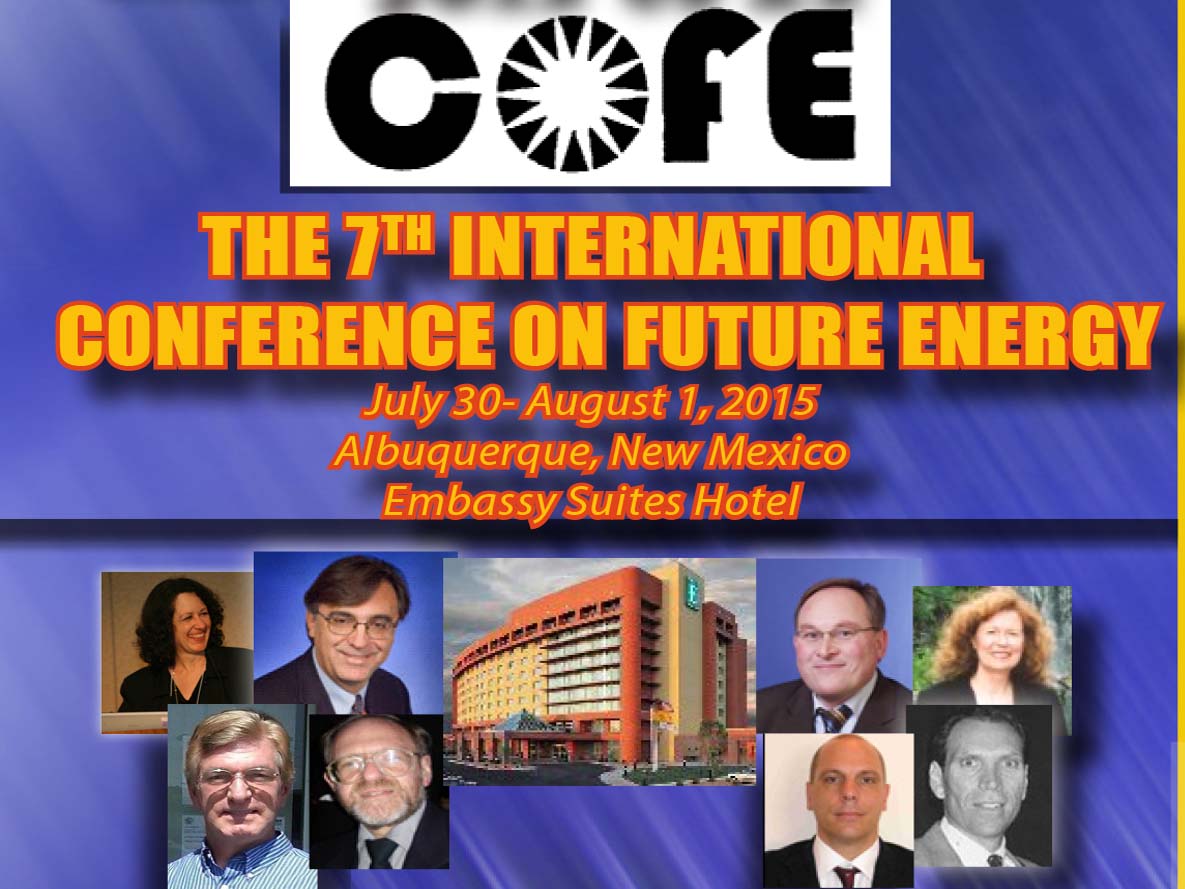

Osteoporosis? Our Newest Item
OsteoPad

EM Pulser
Our best selling PEMF device
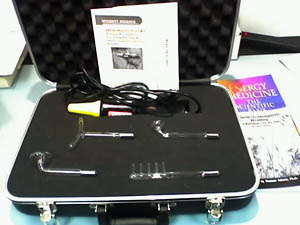
PREMIER Jr.
Our best selling Tesla coil device

|
|
|
1) COFE7 features:
Biophotons, Noble Gas Engine, Zero
Point Energy, Tesla's Wireless Power Assessment, and Boeing's Control
Moment Gyro Propulsion
|
Press Release, for immediate release, Thomas
Valone, Integrity Research Institute, April 29, 2015
www.futurenergy.org for more
information, 301-220-0440

With
the mission of researching scientific integrity in the
emerging areas of clean energy, fuelless propulsion and bioenergetics, Integrity Research
Institute presents a stellar lineup of world experts on the
investigations of these emerging scientific fields vital to human
sustainability. IRI has presented a half dozen International
Conferences on Future Energy (COFE) in the past 16 years,
including the first one (COFE1) .
Every COFE event
has been a cutting edge experience, often a media frenzy, and more
revolutionary and practical than TED conferences. This year COFE7
will be held at the Albuquerque Embassy
Suites Hotel from with very reasonable hotel rates for registered conference
attendees!
COFE PROGRAM SCHEDULE
IRI
is proud to bring the amazing adjunct professor of engineering, Dr.
Nick Simos from Brookhaven National Labs to give a
convincing critical assessment of Nikola Tesla's
"Worldwide Wireless Energy System" that has often baffled
and confused all of the world's electrical engineering experts, as
compared to the comfortable, familiar, umbilical cord we call the
"electrical utility grid" which normally loses 2/3 of its
generated energy* upon delivery and ALL of it during any major storm.
(See all COFE7 speakers abstracts and
biographies online).
Another
spectacular first is Mike Gambles' dual
presentations on various perspectives of inertial
propulsion which to the uninitiated is the future of satellite
and space travel propulsion, as compared to "solar sails"
and other wimpy alternatives. Mike will explain the basic
fundamentals of the gyroscopic origins of the science of producing
unidirectional force electrically and then astound the audience with
a separate talk just for the COFE7 audience on the inside scoop of
Boeing's actual research into the "control moment gyro propulsionengineering"
or how to use gyros to keep satellites in orbit for years!
Complimenting
that presentation is the "anti-gravity" inertial
propulsion technology of the Nazi Bell (die Glocke) experiment by William
Alek which, from the extensive original articles of the
WWII period which he has posted online, proves that the Nazis were
also actively pursuing "gyroscopic propulsion."**
Much
anticipated is the well-researched and investigative report on the
mysterious Papp Noble Gas Engine by Ryan Wood,
just before he competes in the IronMan 2015 Boulder Triathlon Series
on August 2, 2015 (yes ladies, he is a hunk). Dr. Tom
Valone will also review his investigative research into
the V-Track Spiral Magnetic Motor in the evening
of July 29, 2015, which is a motor that has great potential for
brief pulsed energy harvesting and driven through 90% of its cycle by
permanent magnets. Dr. Thorsten Ludwig from Berlin,
Germany will also be reviewing his ongoing research into a single
electron spin experiment.
Dr. Bev Rubik from the Institute for Frontier Science
will be presenting two slideshows with Harry Jabs on
self-organization in aqueous colloids and membrane interfaces as well
as a separate talk on biophoton emission from humans and
other organisms with a discussion of what it reveals.
There
will also be several COFE7 presentations in Albuquerque NM that
relate to vacuum energy, which also includes zero point energy.
The Reid Cell from Germany which is described as a
stand-alone "vacuum energy electron pump" will be
demonstrated by Rolland Gregg. Herbert Renner from
Austria will be presenting several water and wellness devices for his
company, "New Solution for You". Dr John
Milewski will be exploring the magnetic properties of
zero point energy while Carlos Henriques from
Portugal will be showing his colorful, detailed analysis of
zero-point Casimir cavity atomic energy shifts which he
investigated for his Master's degree in 2014. Robert
DeBiase will also be analyzing forces
on asymmetric Casimir plates to reveal anomalous
forces which are proven to be physically real.
Lastly, an interesting
presentation which fills out the COFE spectrum of diversity
includes how inventors can get millions as well as free
publicity by Robert Smith. This special event has one more
surprise that makes it even more attractive: it is also concurrent
with the ExtraOrdinary
Technology Conference in the same hotel during the same
week! Discount, half-price admission rates are applicable for COFE7
registered guests who also wish to attend both conferences.
IRI
is a nonprofit, charitable 501(c)3 organization with a mission
statement approved by the IRS for serving the common good with
educational events and products dedicated to researching scientific
integrity in the areas of energy, propulsion and bioenergetics. IRI
is also registered with .Guidestar.org which
is the premier nonprofit central database of information and clearing
house for NGOs. Visit www.integrity-research.org for
more information about IRI or Futurenergy.org for
COFE history and COFE7 details. Phone 800-295-7674 or
301-220-0440 afternoons for more info.
*Source: US Energy Association, 2002, see slide
#12 of "Future Energy" slideshow online presented by Dr.
Valone at the UN Nexus Youth Summit www.integrityresearchinstitute.org/Valone-FutureEnergy.PDF
**See http://www.intalek.com/Papers/Nazi-Bell-1024x768.pdf and
Alek's own experiments http://www.intalek.com/Index/Projects/GPE/GPE.htm
RELATED PRESS RELEASE
Press Release, for immediate release, Jackie
Panting, Integrity Research Institute, April 24, 2015
www.futurenergy.org for more
information, 301-220-0440
We
are happy to announce that the latest article on Electrogravitics and
Electrokinetics Propulsion written by our President, Thomas Valone,
is now available through the International Journal
of Geosciences Vol 6 No 4. Link for the article is here. This is an
open access journal. If you want more information on this
subject we also have 2 books available on our website and on Amazon.com
Review of Electrogravitics & Electrokinetics
Propulsion
Author(s) Thomas F. Valone
Affiliation(s)R&D Department, Integrity Research
Institute, Beltsville, MD, USA
International Journal of Geosciences Vol.6 No.4, Pub. Date: April 20,
2015
http://www.scirp.org/Journal/PaperInformation.aspx?PaperID=55806
Download as PDF (Size:3599KB)
[Ed. Note: open access journal] ePub, PP. 413-428
DOI: 10.4236/ijg.2015.64033
ABSTRACT
Electrogravitics
and electrokinetics can be traced to T. Townsend Brown's first
article "How I Control Gravity" (Science and Invention,
1929) with the unexplained alignment of the "molecular
gravitors". Brown reported that the dielectrics had high
propulsive force when the "differently charged elements"
were aligned with the voltage source. Perhaps electrogravitics was
also revealed in the article "Gravity Nullified: Quartz Crystals
Charged by High Frequency Currents Lose Their Weight" which
appeared two years earlier in the same magazine in September of 1927.
The editors had a change of heart however, in the following issue,
they rescinded the article. Much of what we know about T. T. Brown is
from his numerous patents and articles, reprinted
in Electrogravitics Systems Volume I, by this author who was
fortunate to correspond with him in 1981 when he was at the
University of Florida. A sample of his detailed correspondence is
contained in the out-of-print book, Ether-Technology: A
Rational Approach to Gravity-Control by Rho Sigma (1977) and in
the recent Defying Gravity: The Parallel Universe of T.
Townsend Brown, Paul Schatzkin, (2009, Embassy Books). Also, a
five-minute Brown-Bahnson Lab video online shows many of the
experimental models that Brown developed toward 1960 with colleague
Agnew Bahnson
|
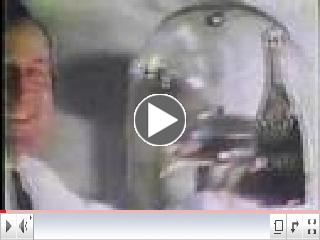
|
|
T.T. Brown Electrogravity Vacuum Experiments
|
KEYWORDS
Electrogravitics, Electrokinetics, Grvitor, Gravity, Antigravity, High Voltage, Force Production, Gravitics
RELATED BOOKS AND REPORTS
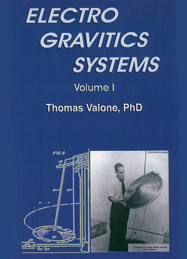
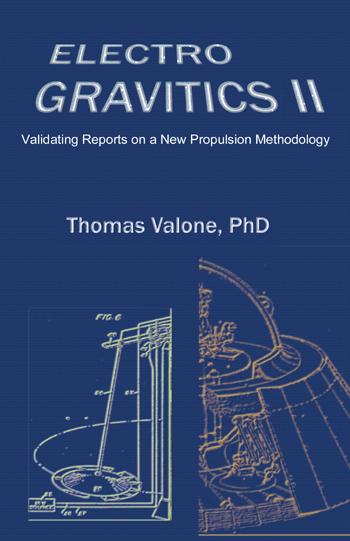
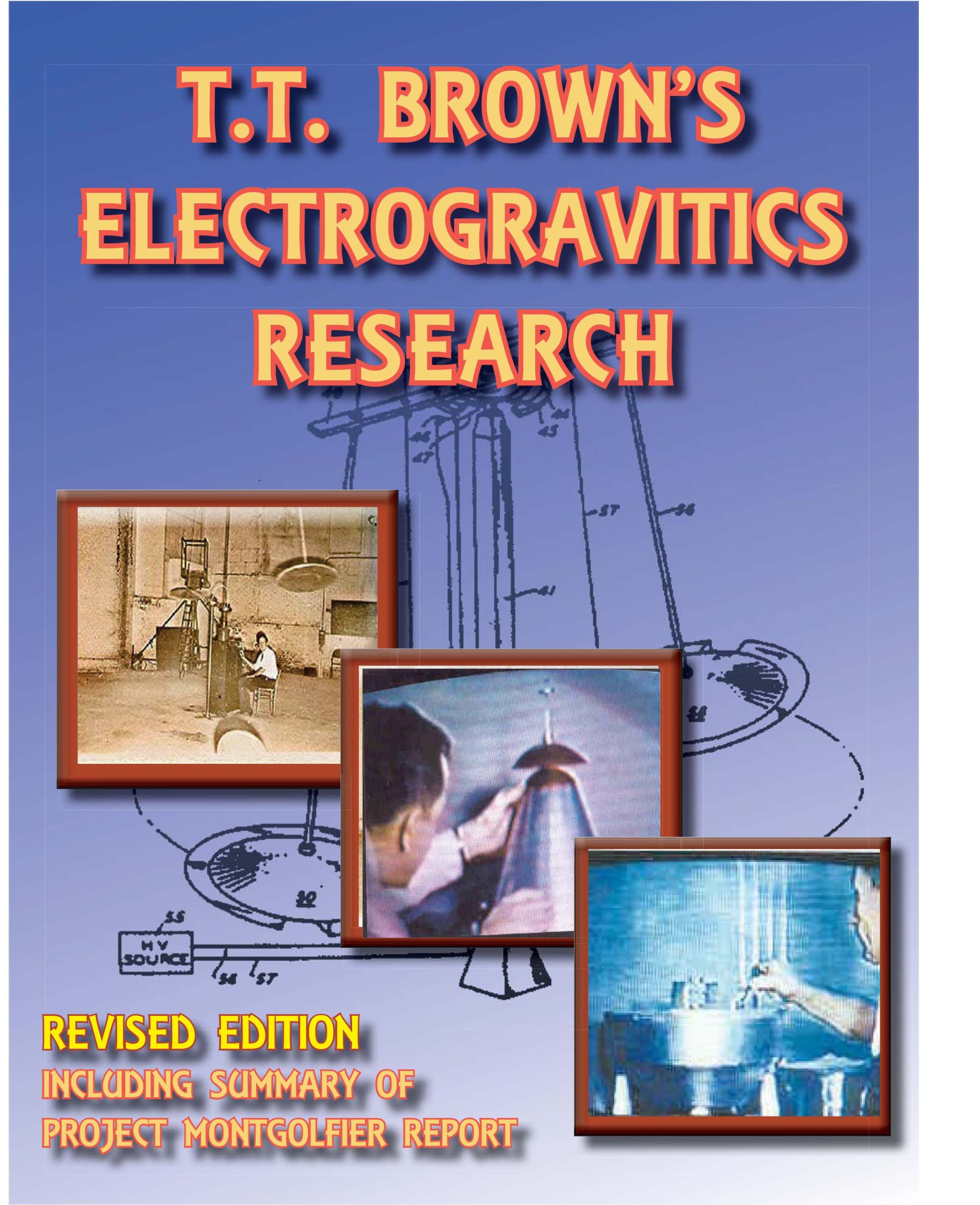
|
2) DreamChaser
Private Space Plane Can Land in Houston One Day
|
By Elizabeth Howell, Space.com April 2015
http://www.space.com/28990-dream-chaser-space-plane-houston-landing.html?cmpid=NL_SP_weekly_2015-04-01
A privately
built spacecraft shaped like a space shuttle could land at a
conventional airport, said its builder, the Sierra Nevada Corporation.

The Dream Chaser spacecraft - which
is expected to continue flight tests later this year - would use
Ellington Airport's Spaceport in Houston as a landing site for at
least the uncrewed version of the craft. The agreement is subject to
Ellington receiving approval for use as a spaceport, officials added.
"Entering
into this new agreement with HAS [Houston Airport System] will lead
to enabling all variants of the Dream Chaser spacecraft to land in
Houston, offering the ability to return cargo and science to Houston
directly from space," Mark Sirangelo, corporate vice president
of Sierra Nevada Corporation's space systems,said in a statement.
Sierra
Nevada has been seriously contemplating using airports for Dream
Chaser's landings since at least November, when it presented a study
on the topic at the Space Traffic Management Conference at
the Embry-Riddle Aeronautical University. at
the Embry-Riddle Aeronautical University.
|
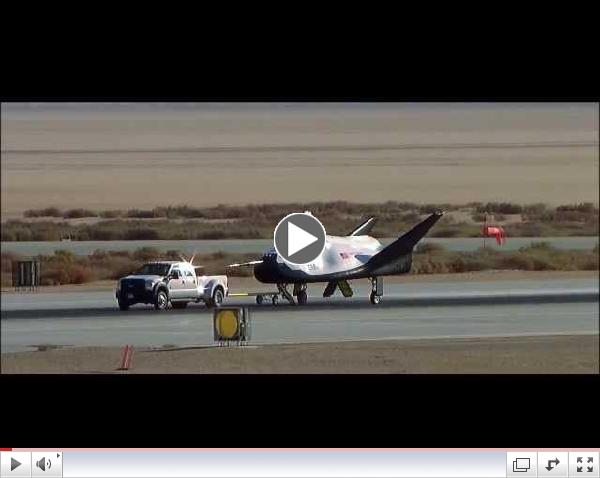
|
|
Sierra Nevada Corporation's Dream Chaser®
Highlight Video
|
At
the time, Sierra Nevada said it was reviewing "the applicable
standards and unique requirements that must be addressed" before
such a landing could take place. It's possible to place the
spacecraft in an airport environment, because it doesn't require any
unique navigation or landing aids and its propellants aren't toxic,
Sierra Nevada said at the time.
Dream
Chaser was originally intended to ferry astronauts to and from the
International Space Station, and the company received millions of
dollars from NASA in competitive commercial crew agreements
to the development. But in 2014, NASA chose not to include
Sierra Nevada in the last round of development funds. The space
agency instead opted to continue funding plans from SpaceX and Boeing
to bring astronauts to the station.
Sierra
Nevada then launched a government complaint alleging favoritism in
the process. The Government Accountability turned down the
protest in January, saying "the proposals submitted by Boeing
and SpaceX represented the best value to the government."
So
far, Dream Chaser has undergone several "captive carry"
tests under an aircraft and a single glide test in 2013, when the
prototype skidded off the runway due to a gear problem. The company
plans to re-pitch Dream Chaser to NASA as a robotic spacecraft that
could deliver cargo to the space station, and is expected to perform
another glide test later in 2015,according to a recent Space News report.
back to table of contents
|
3) Fighting
Fires with Sound Frequencies
|
By Tom Jackman, Washington Post, April 2,
2015
http://www.washingtonpost.com/local/when-it-comes-to-putting-out-fire-gmu-students-show-its-all-about-that-bass/2015/03/22/47a7f8e8-cf1a-11e4-a2a7-9517a3a70506_story.html
 It
happens so quickly you almost don't believe it: Seth Robertson and
Viet Tran ignite a fire, snap on their low-rumbling bass frequency
generator and extinguish the flames in seconds. And even after you've
seen it over and over, it's still unbelievable. It
happens so quickly you almost don't believe it: Seth Robertson and
Viet Tran ignite a fire, snap on their low-rumbling bass frequency
generator and extinguish the flames in seconds. And even after you've
seen it over and over, it's still unbelievable.
But the two
senior engineering majors at George Mason University appear to have
invented and built a way to use sound waves to put out fires. It
started as an idea for a senior research project, and after a year of
trial and error and spending about $600 of their own money, they have
built a somewhat portable sound generator, amplifier, power source
and focusing tube that would seem to have great potential in
attacking fires in a variety of situations.
Robertson, 23,
and Tran, 28, applied for a provisional patent at the end of
November, which gives them a year to do further testing on other
flammable chemicals - so far they have put out only fires started
with rubbing alcohol - and to continue to refine their device.
Although they originally conceived of the device as a way to put out
kitchen fires and, perhaps, fires in spacecraft, a local fire
department already has asked them to test their bass waves on a
structure fire; they think the concept could replace the toxic and
messy chemicals involved in fire extinguishers.
|
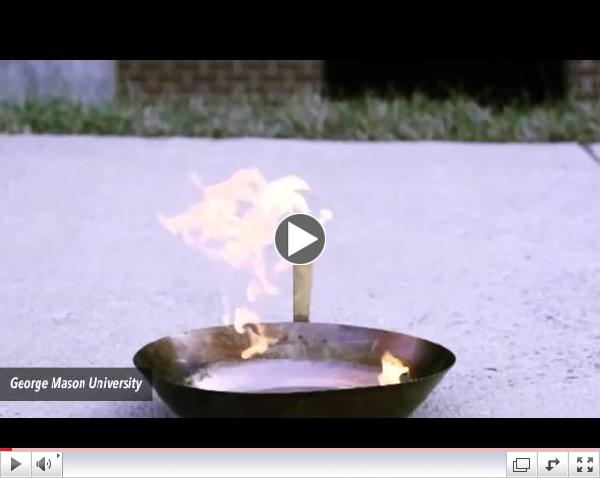
|
|
Engineering Students
Extinguish A Blaze By Simply Using Sound Waves
|
Robertson of Newport
News, Va., and Tran of Arlington, Va., are electrical and computer
engineering majors, and the idea for their senior project came about
only because they didn't like the ideas that their professors had
proposed. They had seen
research on how sound waves could disrupt flames, "but
there's nothing on the market that works," Robertson said.
"So we thought we could be the ones to make it happen. And
that's the inspiration for the project."
As with all
great scientific inspiration, there were plenty of naysayers, the
pair said. They are electrical engineers, not chemical, and were
told, "You guys don't know what you're talking about," Tran
said. A number of faculty members declined to serve as advisers on
the project, but professor Brian Mark agreed to oversee it and not
fail them if the whole thing flopped, Tran said.
But how does it
work? The basic concept, Tran said, is that sound waves are also
"pressure waves, and they displace some of the oxygen" as
they travel through the air. Oxygen, we all recall from high school
chemistry, fuels fire. At a certain frequency, the sound waves
"separate the oxygen [in the fire] from the fuel. The pressure
wave is going back and forth, and that agitates where the air is.
That specific space is enough to keep the fire from reigniting."
So the
trial-and-error began. They placed flaming rubbing alcohol next to a
large subwoofer and found that it wasn't necessarily all about that
bass, musically speaking, at least. "Music isn't really
good," Robertson said, "because it doesn't stay
consistent."
They tried
ultra-high frequencies, such as 20,000 or 30,000 hertz, and could see
the flames vibrating but not going out. They took it down low, and at
the range of 30 to 60 hertz, the fires began to extinguish.
"I honestly
didn't think it would work as well as it did," Tran said.
But the goal was
to create something portable and affordable like a fire extinguisher
that would generate the sound wave at the correct frequency, which
they were able to do with the help of an oscilloscope that measured
the waves.
They connected
their frequency generator to a small amplifier and linked the
amplifier to a small electric power source. These are hooked up to a
collimator that they made out of a large cardboard tube with a hole
at the end, which narrows the sound waves to a smaller area.
And it worked.
"My initial
impression was that it wouldn't work," Mark, their adviser,
said. "Some students take the safe path, but Viet and Seth took
the higher-risk option."
Both are set to
graduate in May. Robertson has been working at the Defense Department
and has been offered a job with the Air Force. Tran has interned at a
Dulles, Va.-area aerospace firm with a promise of a job after
graduation.
Although the
students originally envisioned their device as a tool to attack
kitchen fires and to eliminate the toxic monoammonium phosphate used
in commercial fire extinguishers, they can see more uses: in confined
areas in space, or wide areas outdoors, such as forest fires. Not
having to use water or foam would be a bonus in many situations.
"We still
want to do a lot more testing," Tran said, "to see if we
need to change the frequency [to extinguish] other" materials,
before plunking down thousands of dollars to apply for a patent.
In 2012, the
Defense Advanced Research Projects Agency conducted a project on
"acoustic suppression of flame" and found that it worked on
small levels but could not determine if it would work at "the
levels required for defense applications," the agency said.
Kenneth E.
Isman, a clinical professor in the University of Maryland's
fire-protection engineering department, said that the question of
scale is important. "It's one thing to put out a tiny fire in a
pan," Isman said. "But how much power would you need to
deal with a couch or bed on fire, which is a common scenario in
deadly fires?"
The project also
would have to address different types of fires - solid combustibles
such as wood, paper or metals, or electrical equipment - and keep a
fire from reigniting.
"One of the
problems with sound waves is that they do not cool the fuel,"
Isman said. "So even if you get the fire out, it will rekindle
if you don't either take away the fuel or cool it."
back to table of contents
|
4) CHEAPER
EV's ARE COMING SOON
|
By Mike Orcutt, MIT Technology Review
http://www.technologyreview.com/news/536336/inexpensive-electric-cars-may-arrive-sooner-than-you-think/?utm_campaign=newsletters&utm_source=newsletter-weekly-energy&utm_medium=email&utm_content=20150406
A new study suggests that
battery-powered vehicles are close to being cost-effective for most
people.

Electric cars may seem like a niche product that
only wealthy people can afford, but a new analysis suggests that they
may be close to competing with or even beating gas cars on cost.
The true cost of lithium-ion batteries in
electric cars is a secret closely held by manufacturers. And
estimates of the cost vary widely, making it tough to determine just
how much lower they must go before electric vehicles with long ranges
can be affordable for most buyers. But a peer-reviewed study of more
than 80 estimates reported between 2007 and 2014 determined that the
costs of battery packs are "much lower" than widely assumed
by energy-policy analysts.
The authors of the new study concluded that the
battery packs used by market-leading EV manufacturers like Tesla and
Nissan cost as little as $300 per kilowatt-hour of energy in 2014.
That's lower than the most optimistic published projections for 2015,
and even below the average published projection for 2020. The authors
found that batteries appear on track to reach $230 per kilowatt-hour
by 2018.
If that's true, it would push EVs across a
meaningful threshold. Depending on the price of gas, the sticker
price of an EV is expected to appeal to many more people if its
battery costs between $125 and $300 per kilowatt-hour. Because the
battery makes up perhaps a quarter to a half of the cost of the car,
a substantially cheaper battery would make the vehicle itself
significantly cheaper too. Alternatively, carmakers could maintain
current EV prices but offer vehicles with much longer ranges.
The range would likely be crucial for many buyers
because it's so much cheaper to "fill" an EV with
electricity-charging a car with a 300-mile range could cost less than
$10. Given the disparity in gasoline and electricity prices, the
study's authors, Bjӧrn Nykvist and Måns Nilsson, research fellows at
the Stockholm Environment Institute, say that if batteries fall as
low as $150 per kilowatt-hour, this could lead to "a potential
paradigm shift in vehicle technology."
The analysis suggests that the cost of packs used
by the leading EV manufacturers is falling about 8 percent a year.
Although Nykvist acknowledges that "the uncertainties are
large," he says it's realistic to think that this rate of
decline could continue in the coming years, thanks to the economies
of scale that would be created if large manufacturers like Nissan and
Tesla follow through with their separate plans to massively increase
production. The speed at which the cost appears to be falling is
similar to the rate that was seen with the nickel metal hydride
battery technology used in hybrids like the Toyota Prius, he says.
Nykvist and Nilsson relied on estimates from a
variety of sources: public statements by EV manufacturers,
peer-reviewed literature, news reports (including from MIT Technology Review), and
so-called gray literature, or research papers published by
governments, businesses, and academics.
Luis Munuera, an energy analyst for the
International Energy Agency, and Pierpaolo Cazzola, a transport
policy analyst for the same agency, caution in an e-mail to MIT
Technology Review that the cost reductions implied in the new
analysis "should be taken with care," since battery cost
figures from disparate sources are often not directly comparable.
Further, they point out, the degree to which cost decline trends for
energy technologies can be extrapolated into the future is unclear.
Still, they admit, "we have seen events moving quicker than
expected in lithium-ion battery technology."
RELATED ARTICLES
http://evobsession.com/nissan-leaf-takes-30-non-tesla-us-electric-car-market-2014/
http://cleantechnica.com/2015/04/06/us-electric-car-sales-no-surprises-tesla-model-s-nissan-leaf-bmw-i3-on-top-again/
back to table of contents
|
5) Dark
Matter: What Physicists are Looking For Now that they Found the Higgs
Boson
|
By BloombergBusiness, April 2, 2015
http://www.bloomberg.com/news/articles/2015-04-02/after-higgs-boson-what-physicists-are-looking-for-now
BIG PHYSICS HUNTS FOR TINY THINGS
The
world's most epic physics experiment will flip back on as
early as Saturday. After a two-year tuneup, the Large Hadron
Collider (LHC) will run at twice the power it needed in 2012 to
find the Higgs boson, the long-theorized particle that confers mass
onto matter.

the next
year - physicists still have very little idea what's going
on in the universe, beyond the stuff we can see, touch, and
smell. A big question concerns "dark
matter," what scientists call the stuff that makes
up 80 percent of galaxies but that doesn't interact with light,
atoms, and molecules. They know it's there, but it's hiding from us.
With the Higgs in
hand, finding traces of dark matter is the next big hunt
in high-energy physics.
The
Standard Model of physics is what scientists consider
their working picture of how fundamental particles
behave and interact. But it "has some holes in it," says
Verena Martinez Outschoorn, an assistant professor of physics at the
University of Illinois at Urbana-Champaign. "We know that our
worldview, our model, our understanding of particles and their
interactions is kind of a subset of a bigger picture," she says.
"We have reason to believe there are other particles out
there."
If
there's one rule in the universe that's unbreakable, it's the law of
conservation of energy: Energy cannot be created or
destroyed. So when physicists add up the energy of all the
particles that come out of a collision, they must total the
known energy level of the experiment. If it doesn't add up, that may
indicate that some energy was siphoned away in the generation of dark
matter particles. And by definition, those can't be detected by us.
It's
not an insane way to find new particles. This process is essentially
how scientists found the neutrino, a fundamental particle that's shot
out of radioactive elements and passes right through us all the time.
"This sounds like kind of a funny way of doing a measurement, by
saying what's not there," says Jesse Thaler, an assistant
professor of physics at MIT. "But actually, historically,
we've been quite successful in this."
For
April Fools' Day, CERN published a faux
press release claiming that researchers confirmed the
existence of "the Force," the all-powerful field linking
living things in theStar Wars universe. Closer to the truth may
be Force skeptic Han Solo, who says in the original Star Wars:
I've seen a lot of strange stuff, but I've never
seen anything to make me believe that there's one
all-powerful Force controlling everything.
Physicists
have four forces they can account for: gravity, the weak and strong
nuclear forces, and electromagnetism. Plus, there's the basket of
stuff they don't understand, such as dark matter and dark
energy. Minimalists might prefer that they find, if there's
one waiting to be found, an even simpler understanding of the
universe, one that reconciles the four fundamental forces and the
dark stuff. For scientific accounting - Han Solo be damned - it just
might be neater and easier to have one all-powerful force controlling
everything.
RELATED ARTICLE
|
About
Integrity Research Institute
Future Energy eNews is provided as a public
service from Integrity Research Institute, a Non-Profit dedicated
to educating the public on eco-friendly emerging energy
technologies.
FREE
copy of
the 30 minute DVD "Progress in Future Energy" is
available by sending an email with "Free DVD" in
subject and mailing address in body.
Your generous support is welcome by making a tax
deductible donation on
our secure website
|
|
|
|
|
|
![]()























